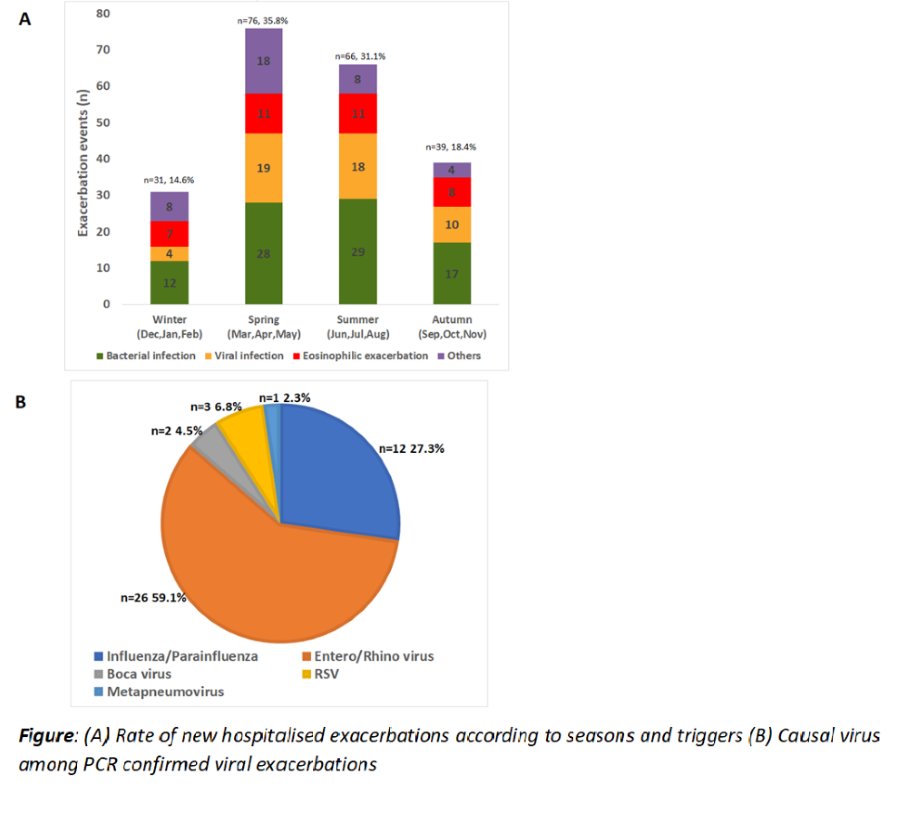Abstract
Background
During the COVID-19 pandemic, hospitalizations for acute exacerbation of COPD(AECOPD)were reduced, particularly due to viral triggers. However,with the easing of lockdown and facemask use, the future pattern of hospitalised exacerbations is unclear.
Objective
To assess the seasonal variation of AECOPD rate and various triggers during the year(2022)
Methodology
We conducted an observational cohort study of admissions with AECOPD in Leicester, UK. Subjects were prospectively recruited at admission and categorised as viral, bacterial, eosinophilic or others.
Results
Of 212 patients (age=67±(10)yrs, 97(46%)male, blood eosinophils count 0.22(±0.1) x109/L, n=27(13%) on home oxygen), admissions for AECOPD were highest in Spring (35.8%) and lowest in Winter(14.6%). Bacterial(40.5%) and viral(24%) infections were the most common triggers. Numerically viral triggers made up the highest proportion in Spring(25%) and Summer(27%) in contrast to Winter(13%), though no difference statistically across seasons(p=0.48). Rhinovirus was the most frequent cause among all viral triggers(p=0.005). The proportion with hospitalization (>4Ds) was significantly different between triggers (Bacterial 72%,Viral 57%,Eosinophilic 54%,Others 47%, p=0.038).
Conclusion
Typical seasonal variation in AECOPD admissions was lost during 2022, following two years of the pandemic. It remains to be seen if seasonality will return in future years.
